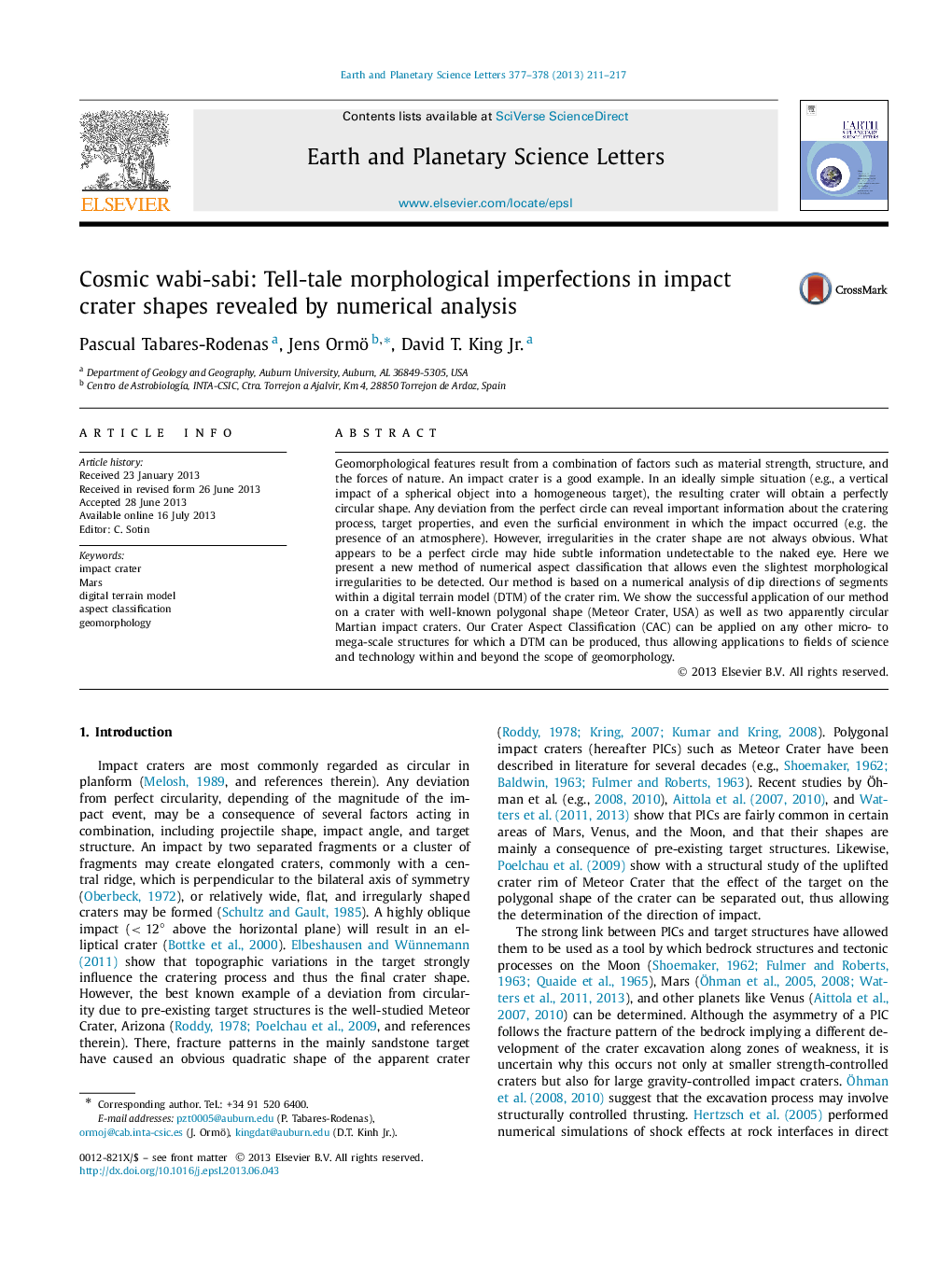| Article ID | Journal | Published Year | Pages | File Type |
|---|---|---|---|---|
| 6430013 | Earth and Planetary Science Letters | 2013 | 7 Pages |
â¢A new method to detect and quantify deviations from symmetry in impact craters.â¢Factors affecting crater morphology, e.g. target, impact angle, can be evaluated.â¢Applicable to many fields across science and technology, from micro to macro scale.
Geomorphological features result from a combination of factors such as material strength, structure, and the forces of nature. An impact crater is a good example. In an ideally simple situation (e.g., a vertical impact of a spherical object into a homogeneous target), the resulting crater will obtain a perfectly circular shape. Any deviation from the perfect circle can reveal important information about the cratering process, target properties, and even the surficial environment in which the impact occurred (e.g. the presence of an atmosphere). However, irregularities in the crater shape are not always obvious. What appears to be a perfect circle may hide subtle information undetectable to the naked eye. Here we present a new method of numerical aspect classification that allows even the slightest morphological irregularities to be detected. Our method is based on a numerical analysis of dip directions of segments within a digital terrain model (DTM) of the crater rim. We show the successful application of our method on a crater with well-known polygonal shape (Meteor Crater, USA) as well as two apparently circular Martian impact craters. Our Crater Aspect Classification (CAC) can be applied on any other micro- to mega-scale structures for which a DTM can be produced, thus allowing applications to fields of science and technology within and beyond the scope of geomorphology.
